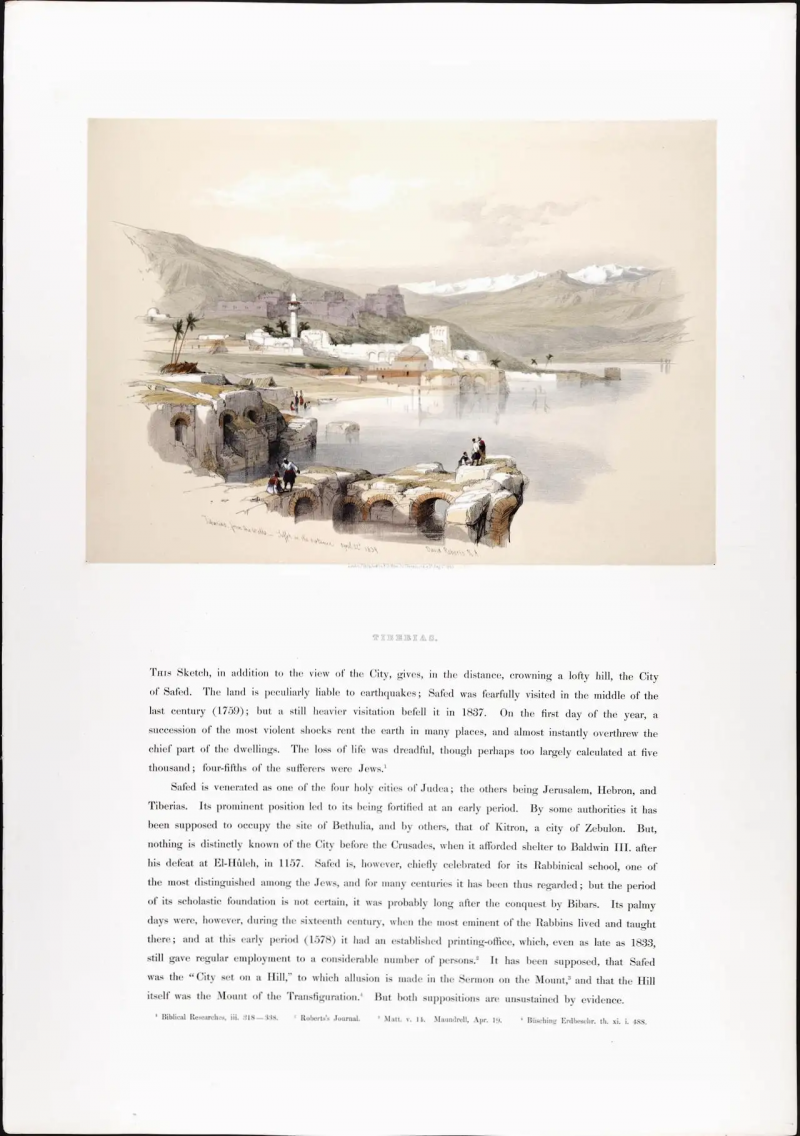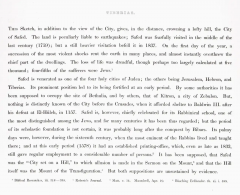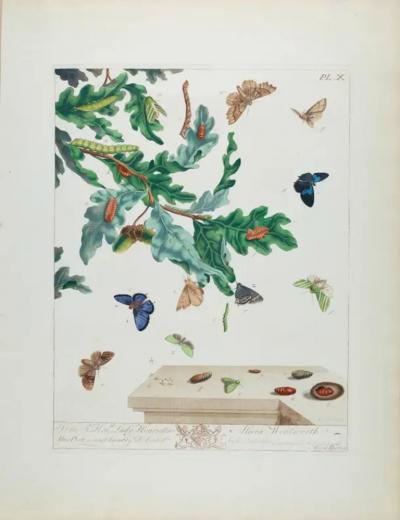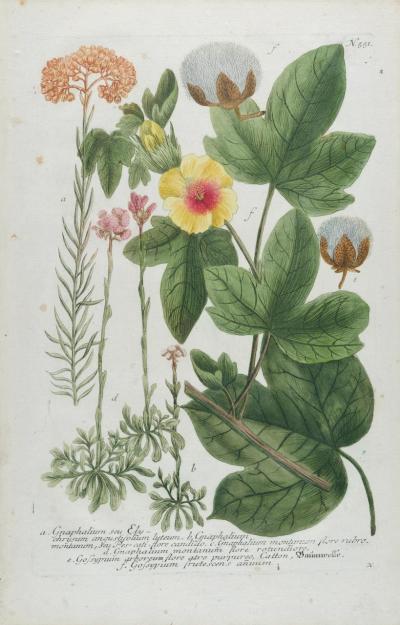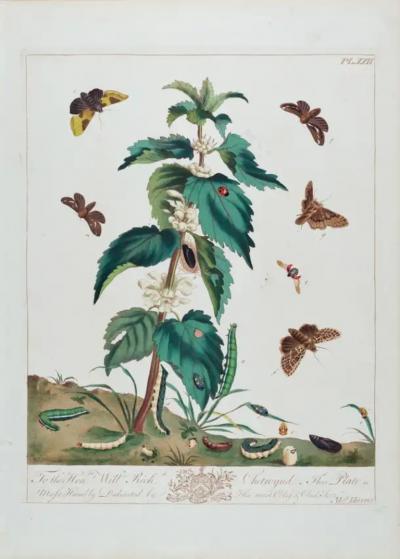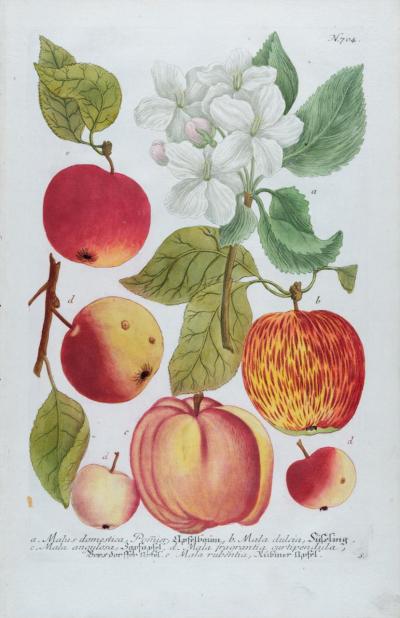Tiberias from the Walls: David Roberts' 19th C. Hand-colored Lithograph
-
Description
This is an original 19th century hand-colored lithograph entitled "Tiberias from the Walls, Saffet (Safed) in the Distance" by David Roberts, from his Egypt and Nubia volumes of the large folio edition, published in London by F. G. Moon in 1841. The lithographs were prepared by Louis Haghe (1806-1885) from drawings and paintings by Roberts. The resultant large folio editions of 'The Holy Land' and 'Egypt & Nubia' are considered among the greatest lithographically illustrated works issued in the 19th century.
This page from Roberts' 19th century publication includes a half-folio hand-colored lithograph of a view of the town of Tiberias and with the town of Safed on the hill in the distance. They lie along the Sea of Galilee and near the Jordan River. Tiberias and Safed are two of the four holy cities of Judea; the others being Jerusalem and Hebron. Local men in their traditional costumes are seen on the walls of Tiberias. Men and women are seen along the shore of the Sea of Galilee, alongside a small boat. Two women carry vessels on their head, possibly containing water.
The print is signed, titled and dated in plate in Roberts' own hand written script, as it appeared in the sketch in his journal. The date, April 22, 1839 is the day Roberts visited the area. The lower portion of the page contains text from Roberts' journal. This print can be displayed in its entirety, including both the lithograph and the text. Another option is to frame only the lithographic image. The text could be displayed on the back of the frame, perhaps glazed.
This hand-colored lithograph print is printed on wove paper with wide margins. The sheet measures 23.88" high and 16.88" wide. The print is in excellent condition.
Tiberias is an Israeli city on the western shore of the Sea of Galilee, dating from around 18 CE. It was founded by Herod Antipas, tetrarch (ruler of a quarter) of Galilee under the Romans. He was the son of Herod the Great, King of Judea. It was named for the reigning Roman emperor Tiberius. From the second through the tenth centuries CE, Tiberias was the largest Jewish city in the Galilee, and a political and religious hub of the Jews in the Land of Israel. After the destruction of the Temple in Jerusalem by the Romans, Galilee became the chief Jewish centre of Palestine, and Tiberias, its principal city, grew in importance.
Safed has been identified with Sepph, a fortified town in the Upper Galilee mentioned in the writings of the Roman-Jewish historian Josephus. It is near Magdala, the ancient fishing town where Mary Magdalene was born. Safed was the site of battles during the crusades. Some believe that Safed was the " City set on a Hill," mentioned in the Sermon on the Mount, and that the Hill itself was the Mount of the Transfiguration, but this belief is controversial. Safed was heavily fortified in ancient times because of religious importance. This area is very susceptible to earthquakes. A powerful earthquake devastated the area only a year before Roberts' visit, with major loss of life.
David Roberts (1796-1864) was a Scottish artist, born outside of Edinburgh, Scotland. At age 10 he became a house painter’s apprentice. He continued painting houses and eventually theater scenes in Edinburgh and then in London. His friend, J. M. W. Turner, recognized his artistic talent and encouraged him to become a full-time artist.
In 1839 Roberts traveled to Egypt and then in 1840, through the Holy Land, concluding in Jerusalem. Upon his return to England, F. G. Moon agreed to publish lithographs created by Louis Haghe from Robert’s sketches and watercolors. This publication was highly acclaimed and very popular for its esthetic quality, its historical and topographical accuracy, as well as Roberts' dramatic depiction of his scenes. His views often included people in their native attire, which provided a dramatic perspective of the size of the architecture. Queen Victoria and Charles Dickens were among the subscribers who collected his works. Roberts' and Haghe’s duotone lithographs, often colored, remain extremely sought-after today and have been rising steadily in value. This work, and his large oil paintings of similar subjects, made him a prominent Orientalist painter. He also produced paintings and lithographs based on his travels in Great Britain and Europe. He was elected as a Royal Academy in 1841. The firm of Day & Haghe produced the lithographs for Roberts' publications. It was one of the most prominent lithographic companies of the nineteenth-century and were pioneers in the evolution of chromolithography. -
More Information
Documentation: Signed Period: 18th Century Condition: Good. Framing Options Available Styles / Movements: Traditional Incollect Reference #: 571091 -
Dimensions
W. 16.88 in; H. 23.88 in; W. 42.88 cm; H. 60.66 cm;
Message from Seller:
Timeless Intaglio is an online gallery of rare and collectable antiquarian prints, maps and books. Although we specialize in all forms of vintage printed works on paper, the majority were created with the intaglio method of transferring ink from a plate, usually copper, to paper with a technique utilizing pressure generated by a press. Email us directly: rbreiman@timelessintaglio.com















